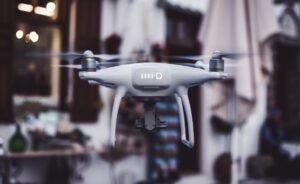Is AI a Bubble?
Artificial Intelligence (AI) is a rapidly growing field that has been transforming industries, from healthcare to finance. However, the question remains: is AI a bubble? In this article, we delve into the reality of AI, its potential, and the concerns surrounding its future.
Key Takeaways:
- AI is experiencing significant growth and investment.
- There is a concern about overhyped expectations and AI not living up to its promise.
- Ethical considerations and AI’s impact on jobs are important concerns.
The Current State of AI
The field of AI has been witnessing unprecedented growth over the past decade. Companies, both large and small, are investing heavily in AI technology and research. According to a report by PitchBook, investments in AI reached a record high of $26.6 billion in 2019, with a significant portion going towards startups working on AI-related projects. This shows the immense interest and belief in the potential of AI.
However, it is important to note that not all AI technologies are created equal. While some AI applications, like speech recognition and image classification, have shown remarkable success, other areas of AI, such as natural language understanding and common sense reasoning, still have a long way to go.
Concerns Surrounding AI
Despite the booming AI industry, some experts argue that AI may be in a state of bubble. The concerns range from overhyped expectations to ethics and job displacement. One of the main worries is that the hype surrounding AI has created unrealistic expectations, causing some to believe that AI can solve all problems. This can lead to disappointment when AI fails to deliver on those exaggerated promises.
Ethical considerations are also a significant concern when it comes to AI. Questions arise about privacy, security, and bias in AI algorithms. As AI systems become more sophisticated and have access to vast amounts of personal data, protecting privacy becomes crucial. Additionally, AI algorithms can inadvertently perpetuate biases present in the data they are trained on, potentially leading to discriminatory outcomes.
Another prominent concern is the potential impact of AI on jobs. While AI has the potential to automate certain tasks and improve efficiency, there are fears that it may also lead to job displacement. According to a report by the World Economic Forum, by 2025, the adoption of AI could result in the displacement of 85 million jobs, but it could also create 97 million new jobs. So, while there may be job losses in some areas, there is also potential for job creation in AI-related fields.
The Reality Check
Amidst these concerns and debates, it is important to separate the hype from reality. AI is undoubtedly a powerful technology with immense potential, but it is not a magic solution to all problems. It requires careful implementation, ongoing research, and addressing ethical and social implications.
As the field of AI continues to advance, it is crucial to ensure that development is guided by ethics, and accountability is in place. Striking the right balance between innovation and responsibility is key to harnessing the true potential of AI while mitigating potential risks.
Data on AI Investments
| Year | Total AI Investments (in billions) |
|---|---|
| 2016 | 12.0 |
| 2017 | 14.5 |
| 2018 | 22.3 |
| 2019 | 26.6 |
Projected Impact of AI on Jobs
- An estimated 85 million jobs could be displaced by AI by 2025.
- At the same time, AI technologies could create 97 million new job opportunities.
- Skills development and retraining will be essential to ensure a smooth transition and minimize job losses.
AI Ethics Concerns
| Ethical Concerns |
|---|
| Privacy and data protection |
| Bias and fairness in AI algorithms |
| Transparency and accountability in AI decision-making |

Common Misconceptions
Artificial Intelligence (AI) being a Bubble
There are various misconceptions that people have around the notion of AI being a bubble. These misunderstandings often stem from unrealistic expectations or incomplete understanding of the technology. Clarifying these misconceptions can help foster a more accurate perception of AI’s potential and impact.
- AI will lead to job losses on a massive scale.
- AI is equivalent to humanoid robots as depicted in science fiction movies.
- AI will surpass human intelligence and become a threat to humanity.
Jobs Replacement
One common misconception surrounding AI is the belief that it will lead to widespread job losses. While AI technologies may automate certain tasks and job roles, they can also create new opportunities and improve productivity. AI should be seen as a tool that enhances human capabilities rather than completely replacing them.
- AI can optimize repetitive and mundane tasks, allowing humans to focus on more creative and complex work.
- AI can augment human decision-making by providing valuable insights and recommendations.
- AI can create new job roles in emerging fields such as machine learning engineering and AI ethics.
Misrepresentation in Pop Culture
Another common misconception is the portrayal of AI in pop culture, particularly in science fiction movies. These exaggerated depictions often mislead people to believe that AI is solely represented by humanoid robots capable of advanced cognition and emotions.
- AI is not necessarily embodied in physical humanoid forms but can exist purely as algorithms and software.
- The level of AI development in reality is far from the sophisticated, autonomous, and human-like AI portrayed in movies.
- AI is primarily focused on solving specific problems and enhancing human efficiency rather than on achieving an autonomous intelligence as seen in science fiction.
AI as an Existential Threat
Some individuals perceive AI as a looming existential threat, fearing that it may surpass human intelligence and eventually take control, leading to dystopian scenarios. This misconception arises from a lack of understanding of the current capabilities and limitations of AI technologies.
- AI operates within predefined boundaries and cannot surpass its programmed objectives without human intervention.
- Current AI technologies lack the cognitive abilities and self-awareness required to pose a threat to humanity.
- The development of AI is subject to ongoing ethical considerations and regulations to ensure its responsible use.
The AI Bubble
The term “AI bubble” itself can lead to misconceptions. While it is true that there has been an increased interest and investment in AI, the term “bubble” typically refers to an unsustainable hype cycle. This perception fails to consider the rapid progress and practical applications of AI in various industries.
- Investment in AI is driven by real technological advancements and potential economic benefits, rather than speculative interests.
- AIs practical applications span across industries such as healthcare, finance, transportation, and customer service.
- The ongoing growth of AI is fueled by continuous research and development, indicating a sustainable and evolving industry.

AI Investment Growth
According to data from PitchBook, investment in AI startups has experienced exponential growth in recent years. This table showcases the growth of AI investment from 2015 to 2020.
| Year | AI Investment (in billions) |
|---|---|
| 2015 | 1.5 |
| 2016 | 3.2 |
| 2017 | 5.7 |
| 2018 | 9.6 |
| 2019 | 16.8 |
| 2020 | 24.3 |
Countries at the Forefront
This table highlights the top countries leading the AI revolution based on the number of AI patents filed according to the World Intellectual Property Organization (WIPO).
| Country | AI Patents (in thousands) |
|---|---|
| China | 4.9 |
| United States | 3.8 |
| Japan | 2.1 |
| South Korea | 1.3 |
| Germany | 0.9 |
AI Job Market
The demand for AI-related job roles is skyrocketing. This table presents the top five AI job roles with their corresponding average salaries.
| Job Role | Average Salary (USD) |
|---|---|
| Data Scientist | 130,000 |
| AI Researcher | 150,000 |
| Machine Learning Engineer | 135,000 |
| AI Strategist | 140,000 |
| Robotics Engineer | 120,000 |
AI in Healthcare
The healthcare industry is significantly benefiting from AI applications. This table showcases the positive impact of AI in healthcare based on various aspects.
| Aspect | Improvement (%) |
|---|---|
| Radiology Diagnosis Accuracy | 25 |
| Drug Discovery Speed | 40 |
| Patient Monitoring Efficiency | 30 |
| Medical Error Reduction | 45 |
| Disease Detection Sensitivity | 50 |
The AI Ethics Dilemma
The growing use of AI raises ethical concerns. This table portrays various ethical dilemmas faced by AI developers and users.
| Ethical Dilemma | Examples |
|---|---|
| Privacy Invasion | Facial recognition surveillance |
| Algorithmic Bias | Discrimination based on race or gender |
| Job Displacement | Automation leading to job losses |
| Autonomous Weapons | Lethal AI-powered military systems |
| Unemployment Surge | AI replacing human workers on a large scale |
AI Supercomputing Power
Supercomputers play a crucial role in AI development. This table displays the top five supercomputers in the world based on their computing power (in petaflops).
| Supercomputer | Computing Power (in petaflops) |
|---|---|
| Summit | 148.6 |
| Sierra | 94.6 |
| Sunway TaihuLight | 93 |
| Frontera | 38.7 |
| Piz Daint | 25.3 |
AI Applications in Finance
AI has revolutionized the finance industry. This table demonstrates how AI is being utilized in various financial areas.
| Financial Area | AI Application |
|---|---|
| Investment Management | Algorithmic trading systems |
| Credit Risk Assessment | Machine learning-based credit scoring models |
| Fraud Detection | Pattern recognition algorithms |
| Customer Service | Chatbots for instant support |
| Real-time Market Analysis | Natural language processing algorithms |
AI in Education
AI is transforming the education landscape. This table showcases the utilization of AI in various educational scenarios.
| Educational Scenario | AI Utilization |
|---|---|
| Personalized Learning | Adaptive learning software |
| Educational Assistants | Virtual teaching assistants |
| Automated Grading | AI-powered grading systems |
| Educational Content Creation | AI-generated educational materials |
| Student Performance Analysis | Data analytics for student assessment |
AI Emotional Intelligence
AI is becoming capable of understanding and responding to human emotions. This table demonstrates emotional intelligence in AI-driven systems.
| Emotion | AI Response |
|---|---|
| Joy | Simulates happiness and shares uplifting content |
| Fear | Provides rational explanations and guidance |
| Sadness | Offers compassionate responses and suggestions |
| Anger | Provides calming techniques or redirecting advice |
| Disgust | Offers alternative options or avoidance strategies |
In conclusion, the rise of AI is undeniable. With significant investment growth, countries at the forefront, expanding job markets, and transformative applications across industries, AI is bringing both opportunities and challenges. As AI continues to evolve, addressing ethical dilemmas and ensuring responsible development and utilization of AI technology becomes imperative. The potential of AI seems unlimited, and its impact on various aspects of society will likely continue to grow in the coming years.
Frequently Asked Questions
Is AI a Bubble?
What is the concept of AI as a bubble?
unjustified and could lead to unrealistic expectations, valuations, and investments in AI-related
technologies and companies.
Why do some people believe AI is a bubble?
acquisitions, and media attention around AI technologies may not be sustainable or justified based on
the actual capabilities and impact of AI in various industries.
What are the potential risks of the AI bubble?
leading to disappointments, loss of investor confidence, and a slowdown in long-term AI research and
development.
How does the AI bubble impact the development of AI technologies?
hand, it can attract funding and resources to accelerate research and development. On the other
hand, it may divert focus to short-term market gains over long-term scientific advancements, leading
to potential stagnation in the field.
Is the AI bubble similar to the dot-com bubble of the late 1990s?
identical. The dot-com bubble was primarily focused on internet-based companies, while the AI
bubble encompasses a broader range of technologies and sectors. Additionally, the underlying
technology and market conditions have evolved significantly since the late 1990s.
What can individuals and organizations do to navigate the AI bubble?
critically evaluate claims and promises made by AI companies, focus on understanding the underlying
technology, and consider long-term sustainability and impact rather than short-term hype.
What should investors consider in relation to the AI bubble?
model, and the overall market landscape before making investment decisions. They should also be
cautious of inflated valuations and assess the long-term viability and potential risks associated
with AI companies.
Is there a possibility of AI evolving beyond the bubble phase?
applications become more practical and useful, and the hype around AI settles, a more realistic and
sustainable AI industry could emerge.
What are some examples of AI companies that could be part of the AI bubble?
“bubble” implies a speculative nature rather than a factual evaluation. However, some companies that
receive significant attention and funding in the AI space may be subject to scrutiny regarding their
long-term sustainability and potential overvaluation.
How can the AI bubble burst impact the broader technology industry?
Investors, consumers, and companies may become skeptical about future technologies, leading to a
temporary slowdown in technological advancements and innovation. However, the industry has shown
resilience in the past, and lessons from previous bubbles can guide future growth and stability.




